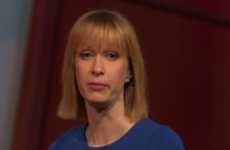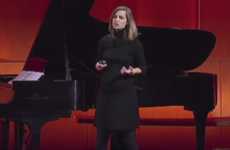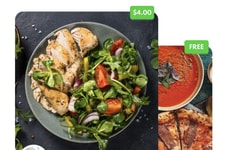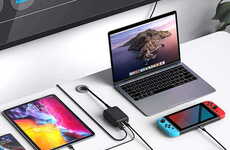
Need Inspiration?
Get inspired by 4,000+ keynote speaker videos & our founder, a top keynote speaker on innovation.
Aaswath Raman's Talk on Energy Efficiency is Extremely Mind-Boggling
Kalin Ned — June 6, 2018 — Keynote Trends
References: raman.seas.upenn.edu & ted
Scientist and co-founder of clean energy start-up SkyCool Systems Aaswath Raman delivers a talk on energy efficiency that highlights some of the concerning uncertainties of climate change. From home-owned ventilators, to store-located refrigerators and industrial scale temperature-regulating systems, cooling devices account for 17% of electricity use and 8% of greenhouse emissions worldwide. The gruesome prediction is that those numbers will grow six times by the year 2050.
During his talk on energy efficiency, Aaswath Raman shares his research, ambition and solution to battle the occurrence of a vicious feedback loop, where people are using cooling systems in hot temperature, while the devices themselves feed the problem in the first place. Inspired by Yakhchal — an ice house, located in Southwest Iran, Aaswath Raman connects the potential solution for energy-efficient cooling systems to outer space.
Thermal radiation is a property of most natural materials. Heat is sent as light to the atmosphere, where it is absorbed and reflected back (i.e. the greenhouse effect). However, a portion of that heat is able to escape via a transmission window to outer space, where temperatures can be as cold as negative 454 degrees Fahrenheit. This process is called "night-sky cooling" or "radiative cooling."
Aaswath Raman and his colleagues conduct metamaterial research, in order to harness this natural phenomenon to benefit man-made cooling systems on Earth during the day. The talk on energy efficiency reveals that the speaker has succeeded in designing an ultra-thin multilayer optical material — one that is "40 times thinner than a typical human hair," which is able to simultaneously target the transmission window and avoid getting heated up by the sun. As the material for it exists in large scales, Aaswath Raman believes that it can serve as a functional efficiency boost for air conditioning and refrigerating systems by at least 12 percent.
During his talk on energy efficiency, Aaswath Raman shares his research, ambition and solution to battle the occurrence of a vicious feedback loop, where people are using cooling systems in hot temperature, while the devices themselves feed the problem in the first place. Inspired by Yakhchal — an ice house, located in Southwest Iran, Aaswath Raman connects the potential solution for energy-efficient cooling systems to outer space.
Thermal radiation is a property of most natural materials. Heat is sent as light to the atmosphere, where it is absorbed and reflected back (i.e. the greenhouse effect). However, a portion of that heat is able to escape via a transmission window to outer space, where temperatures can be as cold as negative 454 degrees Fahrenheit. This process is called "night-sky cooling" or "radiative cooling."
Aaswath Raman and his colleagues conduct metamaterial research, in order to harness this natural phenomenon to benefit man-made cooling systems on Earth during the day. The talk on energy efficiency reveals that the speaker has succeeded in designing an ultra-thin multilayer optical material — one that is "40 times thinner than a typical human hair," which is able to simultaneously target the transmission window and avoid getting heated up by the sun. As the material for it exists in large scales, Aaswath Raman believes that it can serve as a functional efficiency boost for air conditioning and refrigerating systems by at least 12 percent.
4.1
Score
Popularity
Activity
Freshness

















